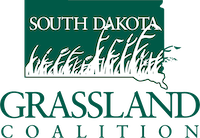By Garnet Perman
With spring snowmelt and some good rains, one might think that testing water sources for salt content isn’t all that necessary. According to SDSU Extension Cow/Calf Field Specialist Robin Salverson, she would tell you to please reconsider. In fact, the day I contacted her regarding an article, she had just returned feedback on several water samples that indicated medium to high salts content.
Typically a concern in drier years, the incidence of poor water quality due to salts seems to be increasing in both West and East River areas. Water quality is linked to soil type.
Sulfates tend to be the main culprit in poor water quality although nitrates can be a problem in wetter years. An entire study has not been done, but water test results tend to indicate that sul- fates comprise 60-65% of salts in many of the water samples Salverson has seen. Sulfate toxici- ty can cause Polioencephalomalacia (PEM) a neurologic disorder that causes swelling to the brain in any age or type of cattle. Symptoms include blindness, staggering, star gazing or look- ing upward, head pressing and seizures where the animal will go down flailing. Veterinary at- tention is required ASAP. Antibiotics are not effective against PEM. Thiamine, a B vitamin, is part of the treatment.
Sulfates can also tie up copper which affect immunity and reproduction. Research at the Cotton- wood Station in the early 2000’s showed cows lost a significant amount of weight, up to 36 pounds when they drank high sulfate water. Calves had a lower rate of gain. Tweaking the min- eral package may be necessary in areas with significant sulfate presence.
Any type of water source except rural water can run high in salts. Stock dams are more suscep- tible than other sources but even wells and spring fed sources can be toxic. Nothing can be add- ed to the water to improve water quality. Dealing with poor water quality may mean reworking the grazing plan and piping or hauling water. Testing water sources along with checking fences in the spring would be a good practice.
Testing is easy. Salverson or another specialist can come out to the location. Simpler yet, fill a clean 12-16 ounce pop bottle or canning jar with water and take it to the local extension office. Call ahead or check the SDSU Extension website to see if your local office tests water or where the nearest testing site is: https://extension.sdstate.edu/news/sdsu-extension-aids-producers- protecting-livestock-through-water-testing-service. Testing is free but only measures total salts, not specific components of the sample. Further testing can be done at a commercial lab at the producer’s expense. Extension cow/calf specialists are able to help with adapting grazing plans, mineral programs and water testing.
Salverson said that decent electroconductivity meters can be purchased for about $60. Some producers who routinely deal with poor water quality take them along when they check cattle or fences. Salverson can recommend different brands and where to purchase meters. Exactly why the increase in poor water quality is occurring is not known. The SD School of Mines and Tech- nology is currently doing water quality research, which may eventually help manage water quality issues. Until then, test that water!
Garnet Perman is a freelance writer and ranches with her husband, Lyle, near Lowry, SD.
